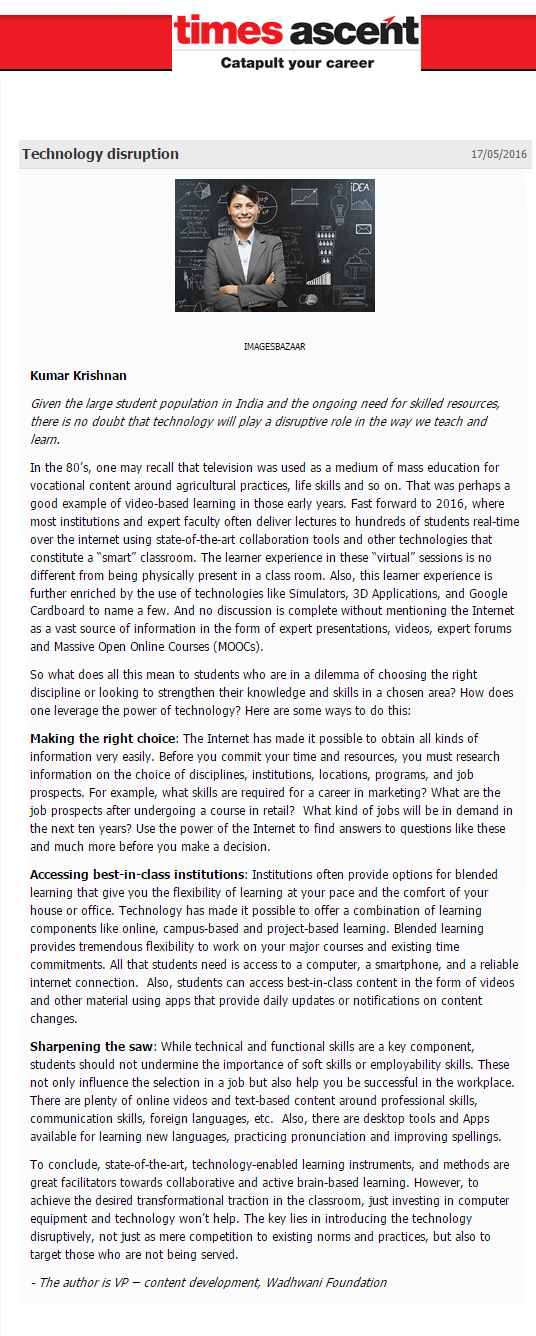Given the large student population in India and the ongoing need for skilled resources, there is no doubt that technology will play a disruptive role in the way we teach and learn.
In the 80’s, one may recall that television was used as a medium of mass education for vocational content around agricultural practices, life skills and so on. That was perhaps a good example of video-based learning in those early years. Fast forward to 2016, where most institutions and expert faculty often deliver lectures to hundreds of students real-time over the internet using state-of-the-art collaboration tools and other technologies that constitute a “smart” classroom. The learner experience in these “virtual” sessions is no different from being physically present in a class room. Also, this learner experience is further enriched by the use of technologies like Simulators, 3D Applications, and Google Cardboard to name a few. And no discussion is complete without mentioning the Internet as a vast source of information in the form of expert presentations, videos, expert forums and Massive Open Online Courses (MOOCs).
So what does all this mean to students who are in a dilemma of choosing the right discipline or looking to strengthen their knowledge and skills in a chosen area? How does one leverage the power of technology? Here are some ways to do this:
Making the right choice: The Internet has made it possible to obtain all kinds of information very easily. Before you commit your time and resources, you must research information on the choice of disciplines, institutions, locations, programs, and job prospects. For example, what skills are required for a career in marketing? What are the job prospects after undergoing a course in retail? What kind of jobs will be in demand in the next ten years? Use the power of the Internet to find answers to questions like these and much more before you make a decision.
Accessing best-in-class institutions: Institutions often provide options for blended learning that give you the flexibility of learning at your pace and the comfort of your house or office. Technology has made it possible to offer a combination of learning components like online, campus-based and project-based learning. Blended learning provides tremendous flexibility to work on your major courses and existing time commitments. All that students need is access to a computer, a smartphone, and a reliable internet connection. Also, students can access best-in-class content in the form of videos and other material using apps that provide daily updates or notifications on content changes.
Sharpening the saw: While technical and functional skills are a key component, students should not undermine the importance of soft skills or employability skills. These not only influence the selection in a job but also help you be successful in the workplace. There are plenty of online videos and text-based content around professional skills, communication skills, foreign languages, etc. Also, there are desktop tools and Apps available for learning new languages, practicing pronunciation and improving spellings.
To conclude, state-of-the-art, technology-enabled learning instruments, and methods are great facilitators towards collaborative and active brain-based learning. However, to achieve the desired transformational traction in the classroom, just investing in computer equipment and technology won’t help. The key lies in introducing the technology disruptively, not just as mere competition to existing norms and practices, but also to target those who are not being served.

